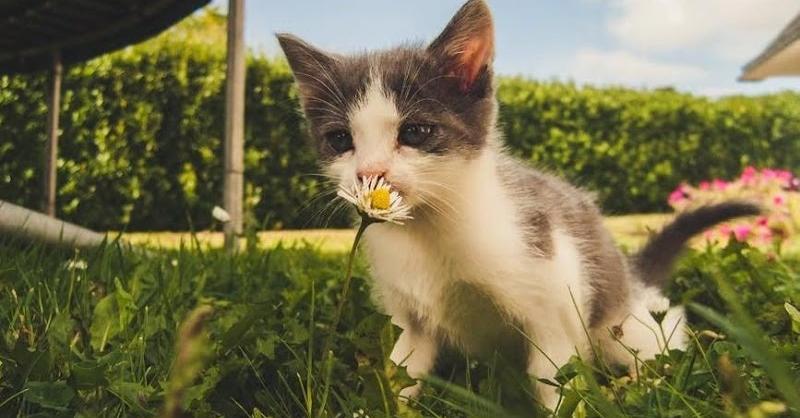If you’ve ever held a newborn kitten, you’ll remember it as an unforgettable experience. They sleep all day, except to eat, and make the cutest sounds. Surprisingly, they’re also blind and deaf once they leave the womb.
Newborn kittens, like human babies, are helpless. They rely entirely on their mother–and by proxy, you–to survive. This can make it devastating when you discover a new kitten not eating.
Something as simple as poor nutrition can be the end for a runt. It’s not just regular feeding, it’s getting them proper nutrition. Yet if they don’t touch their food, what do you do then?
In this guide, we’ll discuss feeding a kitten that doesn’t want to eat.
A New Kitten Not Eating For Days Needs the Vet
Has your kitten not eaten for over a day? That could be a warning sign of some serious underlying problems. If it’s been longer, then their life may be at risk.
Take a kitten that has not eaten for so long straight to the vet. You’ll want a professional opinion. They may require blood tests or other procedures to return your little one to optimal health.
Make sure you have pet insurance. Out-of-pocket procedures will be costly
Why Isn’t Your Kitten Eating?
After adopting a cat, you may assume it will eat anything you give it. Cats are picky eaters, though. Despite being hungry, they may nudge away food for seemingly indecipherable reasons.
Let’s look at some of the common causes of your kitten not eating. Then, we’ll discuss solutions for your new cat checklist.
They Are Still Figuring out How to Eat
Kittens, like babies, spend the first weeks of their life on milk. When they feed, they do so automatically and subconsciously. Infants of all species have built-in eating mechanisms.
Once they wean off milk, though, they have to learn how to eat. It becomes a conscious rather than an unconscious effort. This may lead to challenges that some kitties are not up to.
How to Fix This
Go back to the roots. It may be necessary to wean the kitten off their former diet again. If it was milk, then re-transition them from milk to solid food.
Cat care with an adopted cat may function a bit differently. In particular, if they are too old for milk. In this case, figure out what food they enjoyed eating previously.
If this is a cat from a shelter, call the shelter. Ask them what your cat was eating. Then, feed them this particular food and wean them off it to the new food.
They Lack Routine
Kittens are also like babies in that they expect routine. They are hungry at specific times of the day. As an owner, though, it can be difficult to understand when these times are.
A common mistake owners make with their cat care is to leave food out and wait. They hope that the cat, when it gets hungry, will be forced to dig in at some point. This well-intentioned effort may instead backfire.
A kitten eats whenever they feel like it. They might graze even when they aren’t necessarily hungry. This tends to lead to overeating or undereating.
How to Fix This
Establish a firm routine. Set out food at specific times of the day. You can even use a signal, such as tapping the bowl, to associate that with feeding time.
Take into account the age of the kitten before doing this. Eight-week-old and younger kittens need to eat 3 to 4 times each day. At 12 weeks, they should only eat twice a day.
They Don’t Like the Bowl
Cats are picky, that much we have established so far. Food is only part of the equation. The size, shape, and position of their bowl play a role, too.
A bowl that is too deep or tall is a bad choice. This is because it presses against the cat’s whiskers, creating an uncomfortable sensation for them.
Further, cats like their privacy and peace. Placing their bowl in an exposed, high-traffic area is a bad idea. They also dislike when people watch them as they eat.
How to Fix It
Make sure your cat’s eating bowl is very shallow and wide. This prevents them from touching their whiskers unnecessarily against the bowl’s edges.
Place their bowl in a secluded place without much traffic. This allows them to eat in peace and quiet.
Also, don’t position it near the litter box. Like humans, the places for eating and relieving oneself must be separate.
Their Dish Is Dirty
Cats have a reputation for frequent cleaning routines. They spend long hours licking their fur free of dirt and grime. Naturally, they are averse to living in filthy conditions–including where they eat.
Cats hate dirty litter boxes and dirty bowls. They may love the food inside a bowl, but it doesn’t matter. If it’s dirty, they’ll turn their nose up at it.
How to Fix It
Plain and simple, clean everything your cat uses religiously. Wash the bowl and rinse it well after every feeding. Make sure to towel it dry and remove any residue or dust.
Go a step further by buying a more hygienic bowl. Plastic bowls tend to retain the scent and residue from previous food. Stainless steel or ceramic bowls don’t.
Keep some extra, clean bowls on hand just in case. If one is dirty, you can easily swap it out. Otherwise, you’ll have to tolerate a lot of anxious mewling while the dishwasher does its cycle.
Help Your Kitten Eat Today
Is your new kitten not eating? It usually comes down to a handful of easy fixes. If your new cat still refuses to eat, then it may be time to take them to the vet.
Follow our blog for more helpful advice on pet care.
